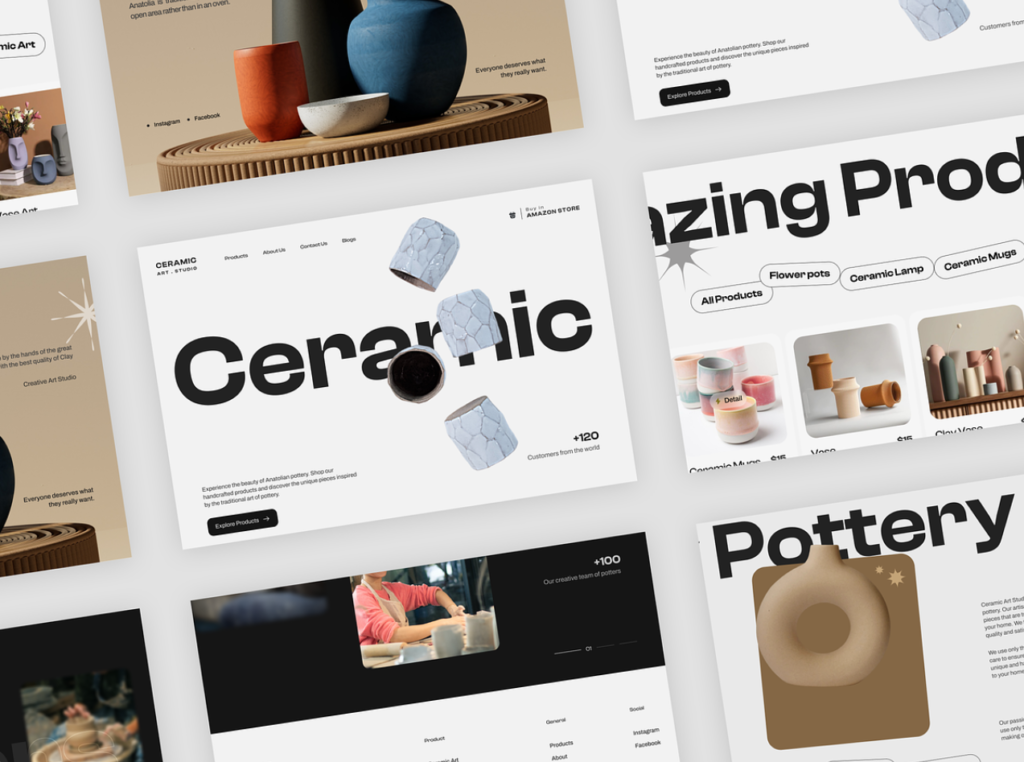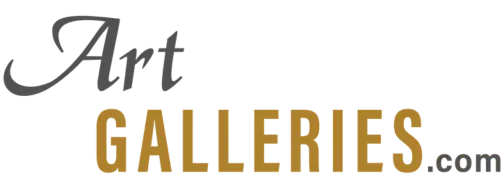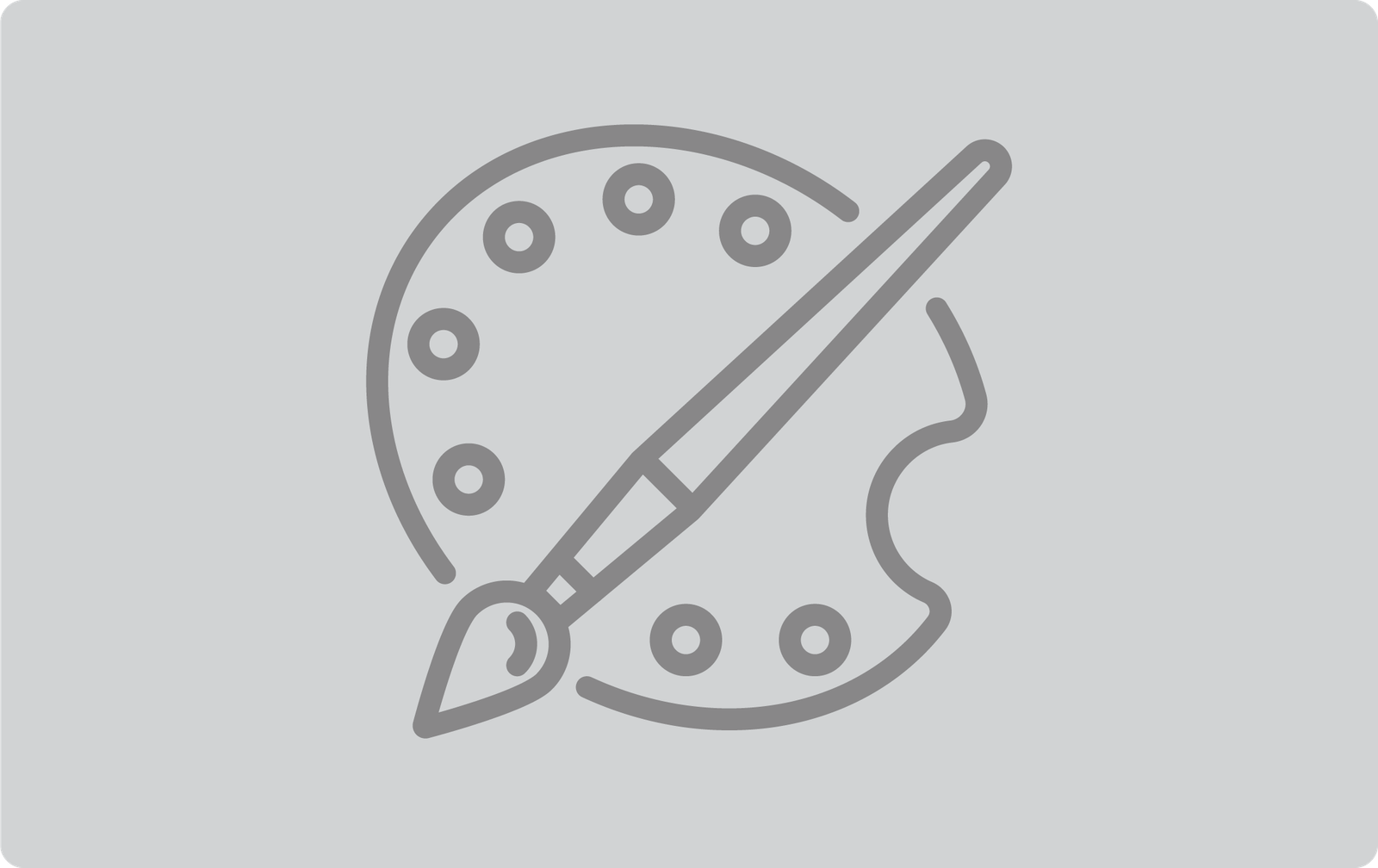Introduction
As an artist, your passion likely lies in creating beautiful, thought-provoking, or inspiring pieces of art, not in deciphering the cryptic world of Search Engine Optimization (SEO).
Yet, in today’s digital age, having an online presence is indispensable for showcasing your work and reaching your audience.
While the intricacies of SEO can seem daunting, especially when you’d rather be in your studio creating, there are straightforward and effective strategies to enhance your website’s visibility without losing your creative soul in the process.
Here, we explore 10 SEO tips tailored for artists like you, who yearn to focus more on art and less on the technicalities of the digital world.
Step 1: Understand Your Audience
Before diving into SEO, understand who your audience is. Are they art collectors, fellow artists, or perhaps people seeking to decorate their homes?
Knowing your audience will guide your SEO strategy, helping you choose the right keywords and create content that resonates with them.
For example:
If and you are mainly selling art to people decorating their homes your website will be optimized completely different then if your target audience was art collectors. While art collectors do decorate their homes with art the vast majority of buyers buying art for their homes are not art collectors and are more looking to support a local or smaller artists while finding a piece that calls to them.
Now what does this mean translated in SEO?
Image Optimization: Let’s say you have a stunning painting of the ocean. When optimizing this image for SEO, consider the alt tags as a storytelling tool. You’re not just describing the image; you’re connecting it to potential scenarios in your audience’s lives. An alt tag for this might read: “blue-green seafoam painting perfect for a beach house.” This tag does more than describe; it places your artwork in the viewer’s world.
Website Organization: Organizing your artwork on your website is another critical aspect. Rather than just categorizing by style or medium, think about the end-use. Create categories that reflect the settings where your art could be most appreciated. For instance, you might have sections like “Art for Beach Houses,” “Urban Loft Art,” or “Tranquil Bedroom Pieces.” This method doesn’t just showcase your work; it helps potential buyers envision these pieces in their own spaces.

Step 2: Streamlining Your Website’s Structure for Artistic Clarity
Building on the foundation of a deep understanding of your audience, the next crucial step in your SEO journey is to simplify your website’s structure. This isn’t merely about cleaning up a few menus or reducing the number of clicks to purchase a painting. It’s about creating an online space that mirrors the elegance and thoughtfulness of your art.
Consider this: A potential buyer, inspired by the idea of a seafoam painting for their beach house, visits your site. What should their experience be? Ideally, it should be akin to walking into a well-curated art gallery. They should feel guided, not overwhelmed; inspired, not confused. This is where simplification of your website plays a pivotal role.
Clear Navigation: Your website should be a straightforward map to your art world. Think of your navigation menu as a curator’s guiding hand, leading your audience through your virtual gallery. Categories should be intuitive and aligned with how your audience thinks. Instead of complex art jargon or obscure categorizations, use clear, relatable terms. For example, “Seascapes for Coastal Living” as a category is far more evocative and understandable than just “Marine Art.”
Responsive Design: In this age of omnipresent digital devices, your website must be as accessible and stunning on a mobile phone as it is on a desktop. A responsive design ensures that your site adjusts beautifully to any screen, inviting viewers into your art world, whether they’re on a crowded train or in the comfort of their living room.
Art-Centric Aesthetics: The design of your website should be a reflection of your artistic style. However, there’s a delicate balance to strike here. The design should not overpower your art but rather complement it. Use colors, fonts, and layouts that echo your artistic sensibilities. If your art is minimalistic, let your website mirror that with plenty of white space and clean lines. If your work is vibrant and textured, incorporate these elements subtly in your web design.
Effortless User Experience: Finally, ensure the path to purchase or inquiry is as seamless as possible. Complex checkout processes or convoluted contact forms can deter potential buyers. Simplify these elements and ensure that the process of buying a piece of art from your website is a pleasure, not a puzzle.
Step 3: Mastering Image Optimization: Balancing Artistic Integrity and Digital Practicality
This is an image compressed from 3.5mb(left) to 249kb(right).
The Time-Saving Miracle of Image Compression
When discussing image compression, especially in the context of an artist’s website, it’s crucial to understand the tangible benefits, particularly in terms of time-saving, both for the artist and the website visitors. Let’s illustrate this with a real-world example: compressing an image from 3.5MB to a mere 249KB.
Understanding the Impact on Loading Times
Original Size (3.5MB): Without compression, an image of this size can be a significant drag on loading times. For a visitor with an average internet speed, a 3.5MB image might take anywhere from 5 to 10 seconds to load fully. This delay can feel like an eternity in the digital world, often resulting in lost interest or a complete bounce from the site.
Compressed Size (249KB): Now, let’s consider the compressed version. At 249KB, the image is drastically smaller in size but still retains the quality necessary to appreciate the artwork. This reduction can slash the loading time to under a second, offering almost instantaneous access to the visual content.
Time Savings for Visitors
From a user’s perspective, the time savings are clear. A faster-loading image significantly enhances the user experience, keeping the visitor engaged and more likely to explore further. In a gallery of multiple artworks, these saved seconds per image accumulate, offering a smooth, uninterrupted browsing experience that keeps the focus on the art, not on loading bars.
SEO and Beyond
For search engines, faster loading times contribute positively to SEO rankings. But the benefits extend beyond just SEO. In an era where mobile browsing is predominant, and data usage can be a concern, a compressed image also means less data consumption for your audience, making your website more accessible and user-friendly.
Time Savings for the Artist
For you, the artist, the time saved in managing and uploading your artwork can be substantial. Smaller file sizes mean quicker uploads and less time spent waiting for images to go live on your site. This efficiency allows you to focus more on creating art and less on the technicalities of managing your online portfolio.
The Bottom Line
Image compression, exemplified by reducing a file from 3.5MB to 249KB, is not just a technical necessity; it’s a thoughtful adaptation to the digital landscape. It respects your audience’s time and accessibility needs, enhances their experience of your art, and streamlines your workflow, making it an indispensable tool in the digital artist’s toolkit.
Embracing WebP Format: In the quest for optimal compression, the WebP format stands out. This modern format provides superior lossless and lossy compression for images on the web. By converting your images to WebP, you can achieve smaller file sizes compared to traditional formats like JPEG or PNG, without sacrificing quality. This means faster loading times, a better user experience, and potentially higher rankings on search engines.
Balancing SEO and Aesthetics: Remember, the art of SEO in your context is not just about appeasing search engines. It’s also about ensuring that your audience can access and appreciate your art with ease. Use descriptive file names and alt tags that not only aid in search engine indexing but also enhance accessibility, especially for visually impaired users who rely on screen readers to experience your website.
Step 4: The Artistic Flair of Keyword Research and Optimization
Navigating the world of keyword research and optimization is akin to delving into a unique form of artistry, one that blends technical know-how with a deep understanding of your artistic niche and audience. It’s a process as personalized and distinctive as your art style, and it’s pivotal in ensuring your artwork reaches the right eyes and hearts.
Embracing SEMrush: A Preferred Tool for Keyword Mastery
While there are myriad tools available for keyword research, SEMrush stands out for its comprehensive features and user-friendly interface. It’s a robust platform that not only aids in identifying relevant keywords but also offers insights into their competitiveness and potential for ranking. They also have a generous free version that doesn’t need any credit card or payment info. You simply get 10 searches of any type per day.
Walking Through SEMrush: A Step-by-Step Guide
Before we dive into the mechanics of using SEMrush, let’s clarify some key terms and concepts that will be crucial in your journey of keyword discovery and optimization:
-
Keyword: This is the term or phrase that potential visitors use in search engines to find content related to your art. Think of it as the bridge that connects your audience’s queries to your website.
-
Search Volume: This indicates how often a particular keyword is searched for in a given timeframe. A higher search volume means more people are looking for that term.
-
Keyword Difficulty: This metric assesses how challenging it would be to rank for a specific keyword, considering the competition. Lower difficulty keywords are generally easier to rank for.
-
Long-tail Keywords: These are longer, more specific phrases that are less competitive and often more targeted to your specific audience. For instance, “abstract expressionist beach scene paintings” as opposed to just “paintings.”
Now, let’s explore how to utilize SEMrush for your art website:
Step 1: Setting Up Your SEMrush Account: First, create an account on SEMrush. They offer various plans, including a free version with 10 searches per day.
Step 2: Keyword Overview: Once logged in, start with the ‘Keyword Overview’ tool. Enter a term you believe your audience might use to find your type of art. SEMrush will provide an analysis, including search volume and difficulty.
Step 3: Analyzing Results: Pay attention to the search volume and keyword difficulty scores. Ideally, you want to find keywords with decent search volume but lower difficulty – these are your ‘easy-to-rank-for’ keywords.
Step 4: Exploring Keyword Variations: Use the ‘Keyword Magic Tool’ to explore variations and related terms. This tool can suggest long-tail keywords, which are invaluable for targeting niche audiences.
Step 5: Competitor Analysis: SEMrush allows you to analyze what keywords your competitors are ranking for. This can provide insights into potential keywords you might have overlooked.
Step 6: Integration into Your Content: Once you have a list of targeted keywords, integrate them naturally into your website’s content, image alt texts, titles, and meta descriptions.
You can also use googles keyword tools as an alternative to SEMrush. Not as user friendly but robust and useful.
Step 5. Crafting Quality Content: The Heartbeat of Your Artistic Online Presence
The creation of quality content is much more than a mere SEO tactic; it’s the digital extension of your artistic voice and vision. Regular updates with high-quality, authentic content not only serve to captivate and engage your audience but also act as a vital cog in the machinery of enhancing your search engine rankings. This is where your artistic narrative comes to life in the digital world.
The Canvas of Content: Beyond the Basics
1. Blogging Your Creative Journey: Your website’s blog can be a canvas where the story of each artwork unfolds. Write about your creative process, the inspiration behind your pieces, or the challenges and triumphs you face in your artistic journey. These stories add a personal dimension to your art, allowing visitors to connect with your work on a deeper level.
2. Behind-the-Scenes Insights: Share insights into your studio practices, your tools, and your techniques. A post about a day in your studio or the process of preparing for an exhibition can be fascinating content that draws your audience into your world.
3. Artwork Narratives: Each piece of art has a story, a reason for its existence. Share these stories. Describe what drove you to create each piece, the emotions involved, or the message you hope to convey. This not only adds depth to your artwork but also makes each piece more memorable and personal to your audience.
4. Exhibition and Event Updates: Keep your audience informed about upcoming exhibitions, online events, or art fairs. This not only keeps your content fresh but also builds anticipation and excitement among your followers.
The SEO Symphony of Quality Content
Enhancing Visibility: Regularly updated, quality content is favored by search engines. Each new post is an opportunity to use targeted keywords naturally, increasing the chances of your website ranking higher in search results.
Building Connections: Quality content encourages visitors to spend more time on your site, reducing bounce rates, and increasing engagement – all positive signals to search engines.
Encouraging Shares: Engaging content is more likely to be shared on social media, further increasing your visibility and driving traffic to your site.
The Artist’s Touch in Digital Storytelling
Remember, in the realm of digital content, authenticity is key. Your content should be as unique and genuine as your art. Avoid generic, repetitive posts. Instead, infuse your content with the same passion, emotion, and authenticity that you pour into your artworks.
Step 6: Utilizing Analytics to Monitor Your Website’s Progress
Harnessing the power of analytics is a pivotal step in understanding and enhancing the performance of your art website. The most comprehensive and widely recommended platform for this purpose is Google Analytics. Not only does it offer a wealth of information, but it’s also free, making it an accessible tool for artists at any level.
Google Analytics is a powerful, indispensable tool for anyone running a website, especially artists seeking to understand their audience better and track the performance of their online portfolio. This free platform offers a wealth of data, allowing you to gain insights into visitor behavior, traffic sources, engagement metrics, and much more. Here’s a straightforward guide to setting up your Google Analytics account:
Step 1: Create a Google Account
If you don’t already have a Google account, you’ll need to create one. This account will be used to access Google Analytics and other Google services.
Step 2: Sign Up for Google Analytics
Go to the Google Analytics website and sign in with your Google account. Click on the “Sign up” button to start the process of creating a new Analytics account.
Step 3: Set Up Your Account and Property
After signing up, you’ll be prompted to set up a new Analytics account. Here, you’ll provide information about your website, such as its name, URL, and industry category. Each website you track is called a “Property” in Google Analytics terms.
Step 4: Get Your Tracking Code
Once your account and property are set up, Google Analytics will provide you with a unique tracking code. This code needs to be installed on every page of your website that you want to track. Or follow the steps below to set up google analytics with your site builder.
Step 5: Install the Tracking Code on Your Website
The process of installing the tracking code varies depending on the platform your website is built on. Here’s a brief overview for some popular website platforms:
Squarespace:
- Obtain your Google Analytics tracking ID from your Google Analytics account.
- Log in to your Squarespace account and select the website you want to track.
- Go to Settings > Advanced > External Services.
- Paste your Google Analytics tracking ID in the provided field and save the changes.
Wix:
- In your Google Analytics account, get your tracking ID.
- Access your Wix site’s dashboard and navigate to Marketing & SEO > Marketing Integrations.
- Find Google Analytics and click ‘Connect’.
- Enter your Google Analytics tracking ID and activate.
GoDaddy:
- Retrieve your Google Analytics tracking ID.
- Log in to your GoDaddy account and select your website.
- Go to Website > Edit Site.
- In the editor, navigate to Settings > Google Analytics and enter your tracking ID.
Shopify:
- Get your tracking ID from Google Analytics.
- Log into your Shopify admin panel.
- Go to Online Store > Preferences.
- Paste your Google Analytics tracking ID in the Google Analytics account field.
Hostinger:
- Copy your tracking ID from Google Analytics.
- Log into your Hostinger dashboard.
- Navigate to Website > Edit Website.
- Locate the SEO or Analytics section and enter your tracking ID.
Square Online:
- Obtain your tracking ID from Google Analytics.
- From your Square Online Overview page, go to Settings > Tracking Tools.
- Click ‘Add New Code’ and select ‘Google Analytics’.
- Enter your tracking ID and save the changes.
Pixpa:
- Copy your Google Analytics tracking ID.
- Log into your Pixpa studio.
- Go to Settings > SEO & Analytics.
- Paste your tracking ID into the Google Analytics field.
Utilizing Google Analytics for Insights
Once integrated, Google Analytics becomes an invaluable resource. It allows you to track visitor behavior, understand traffic sources, monitor page views, and much more. By analyzing this data, you can make informed decisions about your website’s content, structure, and marketing strategies.
The Bottom Line
Incorporating Google Analytics into your website management routine is not just about numbers and data; it’s about gaining insights into your audience’s preferences and behaviors. This knowledge empowers you to tailor your website and your art to better connect with your audience, ultimately enhancing your online presence and success
Step 7: Other Useful SEO Tools
1. Google Search Console
- Setup: Sign in with your Google account at Google Search Console. Add and verify your website by following the instructions.
- Use: Monitor your website’s presence in Google Search results, track indexing status, and optimize visibility.
2. Ubersuggest (Free Version)
- Setup: Visit Ubersuggest and create an account. You can start using the free features immediately.
- Use: Research keywords, analyze competitors, and get content ideas.
3. MozBar
- Setup: Install the MozBar extension from MozBar Download for your browser.
- Use: Get instant metrics on any webpage, including page authority and domain authority.
4. CanIRank
- Setup: Create an account at CanIRank.
- Use: Receive specific recommendations to improve your website’s ranking.
5. Google Keyword Planner
- Setup: Access through a Google Ads account at Google Keyword Planner.
- Use: Research keywords for your content and advertising strategy.
6. Screaming Frog SEO Spider (Free Version)
- Setup: Download from Screaming Frog SEO Spider.
- Use: Audit your website for SEO issues, broken links, and more.
7. AnswerThePublic (Free Version)
- Setup: Go to AnswerThePublic and start using without an account for basic features.
- Use: Find what questions people are asking about your niche for content ideas.
8. Keywords Everywhere (Free Version)
- Setup: Install the extension from Keywords Everywhere.
- Use: See keyword data directly in your search results on multiple websites.
9. SEMrush (Free Trial)
- Setup: Register for a free trial at SEMrush.
- Use: Comprehensive suite of tools for keyword research, site audits, and competitor analysis.
10. Ahrefs (Free Trial)
- Setup: Sign up for a free trial at Ahrefs.
- Use: Explore backlinks, keywords, and other SEO metrics.
11. Moz Pro (Free Trial)
- Setup: Access the free trial at Moz Pro.
- Use: Utilize their all-in-one suite of SEO tools for tracking and improving your site’s performance.
12. SpyFu (Free Trial)
- Setup: Sign up for a free trial at SpyFu.
- Use: Conduct deep competitor analysis and keyword research.
13. BuzzSumo (Free Trial)
- Setup: Access the free trial at BuzzSumo.
- Use: Discover content trends and influential content in your niche.







 Visit our website at
Visit our website at